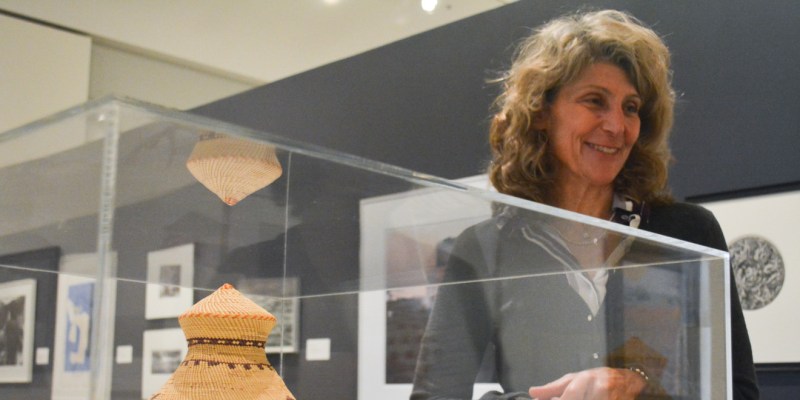Ever since Don Quixote roamed La Mancha and the modern novel was born, land-based, national narratives have dominated conversations about literature. “Imagining the Oceans,” however is a class that aims to encourage a more nuanced look at artistic expressions of the sea and its role in literature. This year, for the first time, Cantor Arts Center has paired with the class to create a special exhibit featuring artistic depictions of the sea.
“Imagining the Oceans,” taught by Professor of Comparative Literature and English Margaret Cohen, combines what Cohen calls the “practice” of the sea — sailing, navigating, ship building or studying marine creatures — with literary and artistic fantasies of the sea. In short, the class analyzes how people have imagined the oceans throughout history.
“I want students to take account of the specificity and the texture of the practice of the sea and not just think of the sea as some Romantic trope that we can fantasize about with no context of practice,” said Cohen.
The new Cantor exhibit will allow students to analyze not only literature but also artwork focused on the ocean.
“This exhibition showcases the extraordinary range of visual genres that have expressed both the practical life of the oceans and the creative inspiration offered by the ocean environment since the beginnings of modern globalization,” reads a description on display at Cantor.
The artwork in the exhibit, which comes from the Cantor’s collection, varies in medium and time period, but is connected by the themes of Cohen’s class. It consists of mostly western artifacts, beginning from the rise of global modernity.
The earliest works are two engravings called “Neptune’s Kingdom” and “The Creation of The World” by Dutch artist Jacques de Gheyn II from 1587 and 1590, respectively.
Other works in the exhibit include a 1945 photograph of a sailor’s tattoo, an 1852 woodblock print of the Battle of Yashima in Japan, a 1963 photograph of “Storm Surf” by Ansel Adams, and a map of the world made by a premier cartographer of the time and printed in 1719, the same year Robinson Crusoe was released.
Cohen grew up spending summers on the eastern end of Long Island, sailing in the Peconic Bay and fishing with her father. It is here that her personal fascination with the ocean began. Cohen believes that Maritime Humanities is a rich field for exploration.
“It’s an understudied area,” said Cohen.
“People who studied the novel [in the late 20th century] were very interested in its role in modernity from the perspective of land — industrialization, colonialism, imperialism, the rise of the nation state — and people didn’t connect the dots and think about the fact that people had traveled across the oceans for this to occur.”
Students in the Imagining Oceans class read texts including “The Old Man and the Sea” by Ernest Hemingway, “The General History of Pyrates” by Daniel Defoe, Herman Melville’s “Benito Cereno,” as well as various poems centered around maritime themes.
As a midterm assignment, students in the undergraduate seminar were asked to relate a piece of reading from the class to a piece of art from the Cantor.
English major Gideon Davidson ’16, decided to compare the 1902 novella by Joseph Conrad “Typhoon,” with a photograph displayed in the exhibit called “Shipbreaking #11,” of Bangladeshi workers taking apart a ship during low tide.
“The ship in [Typhoon] was made inseparable with the sea,” said Davidson. “It was a single entity, and the ship was what preserved the human life. And from the picture it was kind of the opposite of that — the ship had no agency, it was a dead creature devoid of any life…and the humans in the picture were working to reduce it to its barest material.”
Cohen commented on the same photograph.
“There’s a kind of nobility given to the workers engaged in this completely unseen labor…that’s an unobserved part of the work of the sea but vital to commerce today,” said Cohen.
Spencer Slovic ’18, another student in the class, finds this class offers a unique literary perspective.
“When you talk about sea literature in the context of other classes, you’re not really talking about the ocean. It’s just been interesting seeing all these books that are probably taught in other classes… but wouldn’t be talked about in the context of humanity’s relationship with the ocean,” said Slovic.
Overall, Cohen hopes that the class “enriches [students’] understanding of the way that artists and writers abstract the ocean and create fantasies of it.”
Contact Emma Neiman at eneiman ‘at’ stanford.edu
